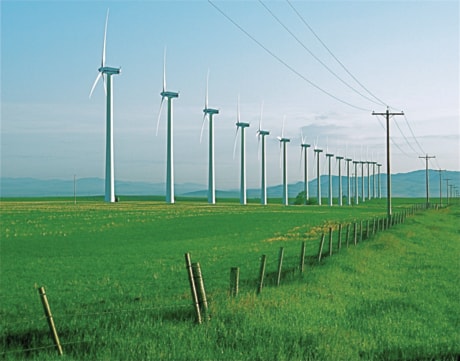“Ontario would have to add 3,500 large windmills just to match the output of one of the smaller natural gas generating stations in Ontario” — Bill Greenwood
“Look over there … where more than 30 monstrous giants [ie, windmills] appear. I intend to do battle with them and take all their lives.” — Don Quixote
Columnist Bill Greenwood wrote about the supposed dismal economics of windmills, while Quixote raged about their supposed evil nature. Of course, Quixote was just a little bit insane, and after he charged up to one of them on his pitiful steed, his lance caught up in one of the blades and it sent both rider and horse “rolling badly injured across the plain.”
So Don Quixote was certainly delusional, but what about Greenwood’s numbers?
I had just come back from a trip to Waterton National Park, so I had a chance to see quite a few of the “monstrous giants” up close. I thus found it hard to believe that it would take 3,500 of these gigantic (many of them 100 metres tall) turbines to equal a small natural gas generating station.
One of the most common wind generators in the area (in fact, one of the most common in the world) is the General Electric 1.5sle. It generates 1.5 megawatts (MW) of power on a good day.
Of course, not all days are “good”, in that even around Pincher Creek, there are some days when the wind slows down to a mild breeze.
So, the concept of “capacity factor” becomes crucial. It is a function of the average time at a windmill site when the wind is actually blowing hard enough to keep the turbine buzzing at the optimal output.
A study by BECL and Associates found that the capacity factor for the average Alberta wind farm was about 30 per cent to 35 pre cent (so the turbine output is sub-optimal about two-thirds’s of the time).
Thus, if you multiply 30 pre cent by 1.5 MW, you get a conservative estimate of .45 MW of reliable power from an average wind turbine.
As for the power output from a “small” natural gas generating plant, I looked at a Siemens brochure. They are one of the world leaders in this technology, and the brochure listed a range of plant sizes from a 1,500 MW plant in the United Arab Emirates to a 290 MW plant in the Netherlands.
Most were in the 400 MW to 600 MW range.
So, to equal a relatively small natural gas plant of 400 MW, you’d need about 900 wind generators (400 MW divided by .45 MW). Or with GE’s newer 2.5 MW wind turbines, you’d need about 530 units. That’s still quite a lot, but nowhere near 3,500.
As for Greenwood’s assertion that any new wind power needs to be backed up by an equal amount of fossil fuel power, he should perhaps take a look at the U.S. Department of Energy’s publication called Wind Energy Myths at: http://www.nrel.gov/docs/fy05osti/37657.pdf
On the aesthetics of the huge beasts, Greenwood calls them “unsightly”. I would call them majestic.
On my trip to Waterton, I was exploring the gravel roads outside of Pincher Creek, trying to get some decent photos of the turbines framed against the mountains (and trying to keep my wife from cursing the invention of the camera).
You need a darned good tripod to withstand the winds in the area, but with a ¼ second of exposure time, you can capture the movement of the massive 38 metre blades against a tack-sharp image of the mountains in the background.
Greenwood knows beauty. In another column, he admired the Supermarine Spitfire, a fighter plane that not only saved Britain from tyranny during the war years, but with its perfect sinuous lines, could have easily been built by Enzo Ferrari in the 1960’s.
That’s what you get with a Spitfire or a Ferrari: form beautifully following function.
So why not a wind turbine? There is a definite feeling of awe that comes from watching a massive set of rotors sweeping an area larger than a football field every few seconds. And a whole ridge of them extending for many miles is even more impressive.
Greenwood might not like them, and Quixote may have tried to smite them, but I find an undeniable attraction in watching Mother Nature and human technology interact in such a powerful ballet.
Evan Bedford is a local environmentalist. Direct comments, questions and suggestions to wyddfa23@telus.net. Visit the Energy and Ecology website at www.evanbedford.com.
